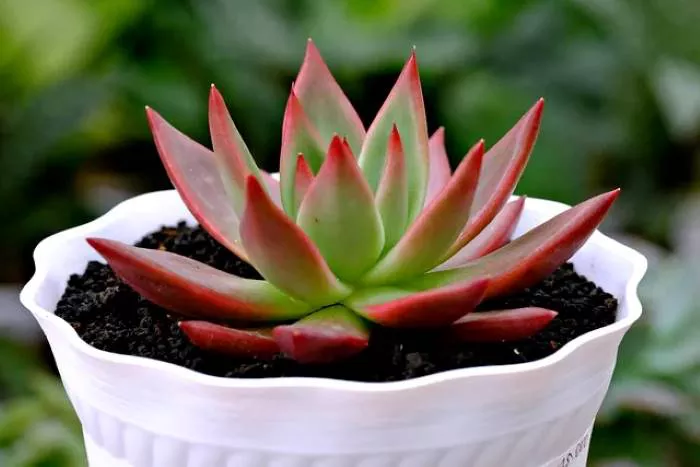Succulents have gained immense popularity in recent years. Their unique shapes, vibrant colors, and low maintenance needs make them appealing to both novice and experienced gardeners. However, to thrive, succulents require the right type of soil. Understanding the specific soil needs of succulents is essential for their health and growth. This article will explore the characteristics of suitable soil for succulents, the ingredients that can be used, and how to create the perfect mix.
Understanding Succulents and Their Needs
Succulents are plants that store water in their leaves, stems, or roots. This adaptation allows them to survive in arid conditions. As a result, succulents prefer well-draining soil that prevents water from accumulating around their roots. Excess moisture can lead to root rot, a common problem that can quickly kill these plants.
The ideal soil for succulents mimics their natural habitat, which is often sandy or rocky with excellent drainage. When choosing soil, it is crucial to consider the specific needs of succulents to ensure they receive the right nutrients and moisture levels.
Characteristics of Ideal Soil for Succulents
The best soil for succulents has several key characteristics
Well-Draining Good drainage is the most critical factor. Succulents cannot tolerate standing water, so the soil must allow excess moisture to escape quickly.
Aeration The soil should provide adequate aeration to the roots. This helps prevent compaction and allows for proper oxygen exchange.
Nutrient-Rich While succulents do not require highly nutrient-dense soil, they still need some nutrients to grow. A balanced mix can support their growth without overwhelming them.
pH Level Succulents generally prefer slightly acidic to neutral soil with a pH level between 6.0 and 7.0. This range supports nutrient availability and overall plant health.
Commercial Soil Mixes for Succulents
For those who prefer convenience, numerous commercially available soil mixes are specifically formulated for succulents and cacti. These mixes typically contain the necessary components to ensure good drainage and aeration. When selecting a commercial mix, look for products labeled as cactus or succulent soil.
Some popular brands offer high-quality mixes that incorporate pumice, perlite, or coarse sand to enhance drainage. Always check the ingredients to ensure they meet the specific needs of your succulents.
Creating Your Own Succulent Soil Mix
For gardeners who enjoy DIY projects, creating your own succulent soil mix can be rewarding. A custom mix allows you to control the ingredients and tailor the soil to your specific plants. Here are some common components to consider when making your own succulent soil
Potting Soil Start with a basic potting soil as the base. This provides some nutrients and structure. However, avoid using regular potting soil alone, as it tends to retain too much moisture.
Perlite Perlite is a lightweight volcanic glass that improves drainage and aeration. It helps prevent soil compaction and allows for better root development. A good ratio is to mix one part potting soil with one part perlite.
Pumice Pumice is another excellent amendment that enhances drainage. It is heavier than perlite but provides similar benefits. Mixing pumice with potting soil can create a well-draining environment for succulents.
Coarse Sand Coarse sand can also be added to the mix to improve drainage. It should be clean and free of contaminants. A mix of potting soil, perlite, and coarse sand in equal parts works well for most succulents.
Coconut Coir Coconut coir is a sustainable alternative to peat moss. It retains some moisture while still providing good drainage. If you choose to include coconut coir, use it sparingly, as succulents prefer drier conditions.
Tips for Planting Succulents
When planting succulents, consider the following tips to ensure their success
Choose the Right Container Use pots with drainage holes. This allows excess water to escape and prevents root rot. Terracotta pots are a great option as they are porous and help wick moisture away from the roots.
Layering When planting, consider adding a layer of gravel or small stones at the bottom of the pot. This can help improve drainage further and keep the soil from washing out through the drainage holes.
Watering Practices Water succulents thoroughly but infrequently. Allow the soil to dry out completely between waterings. This mimics their natural environment and helps prevent overwatering.
Monitor Soil Moisture Use a moisture meter or simply check the soil with your finger. If the top inch of soil feels dry, it is time to water.
Conclusion
Choosing the right soil for succulents is crucial for their health and growth. Succulents thrive in well-draining, aerated soil that mimics their natural habitat. Whether using a commercial mix or creating your own, it is essential to include ingredients that promote drainage and prevent moisture retention. By understanding the specific needs of succulents and using the appropriate soil, gardeners can enjoy healthy, vibrant plants that bring beauty to their homes and gardens. With the right care and attention, succulents can flourish and thrive for many years.


